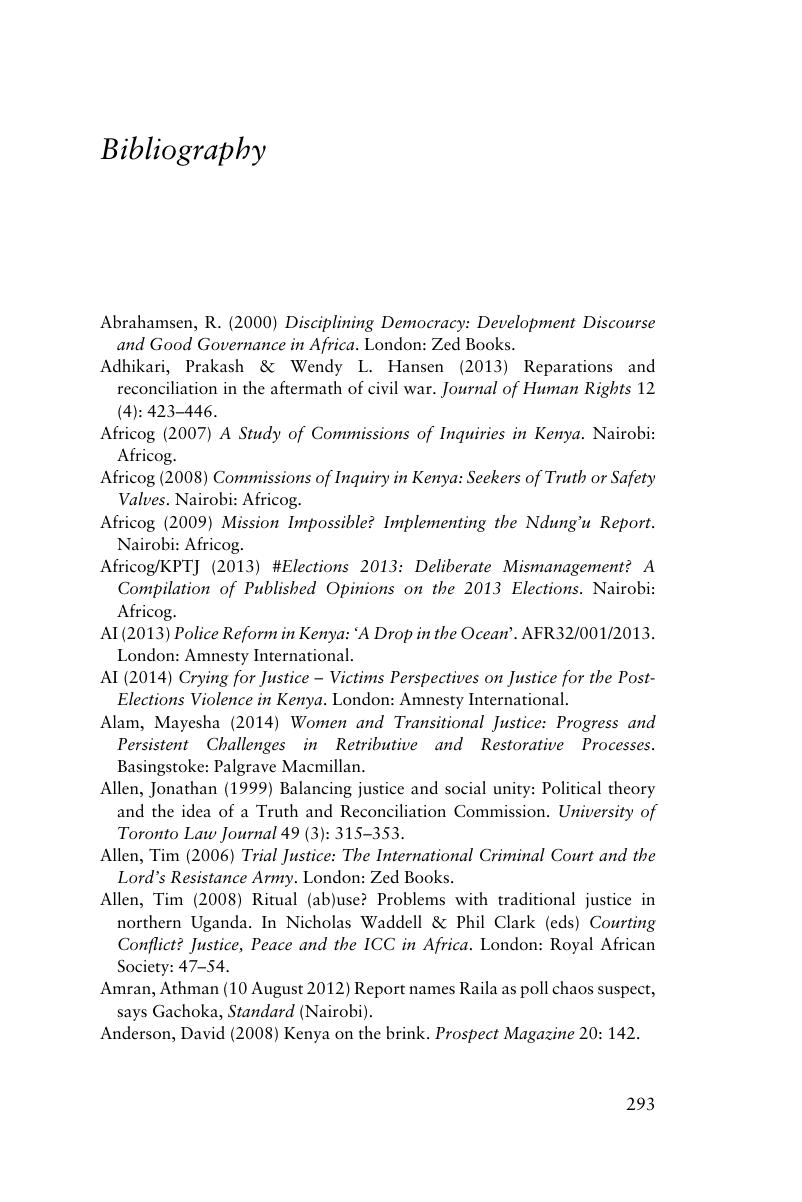Bibliography
Published online by Cambridge University Press: 17 August 2018
Summary

- Type
- Chapter
- Information
- Performances of InjusticeThe Politics of Truth, Justice and Reconciliation in Kenya, pp. 293 - 326Publisher: Cambridge University PressPrint publication year: 2018

